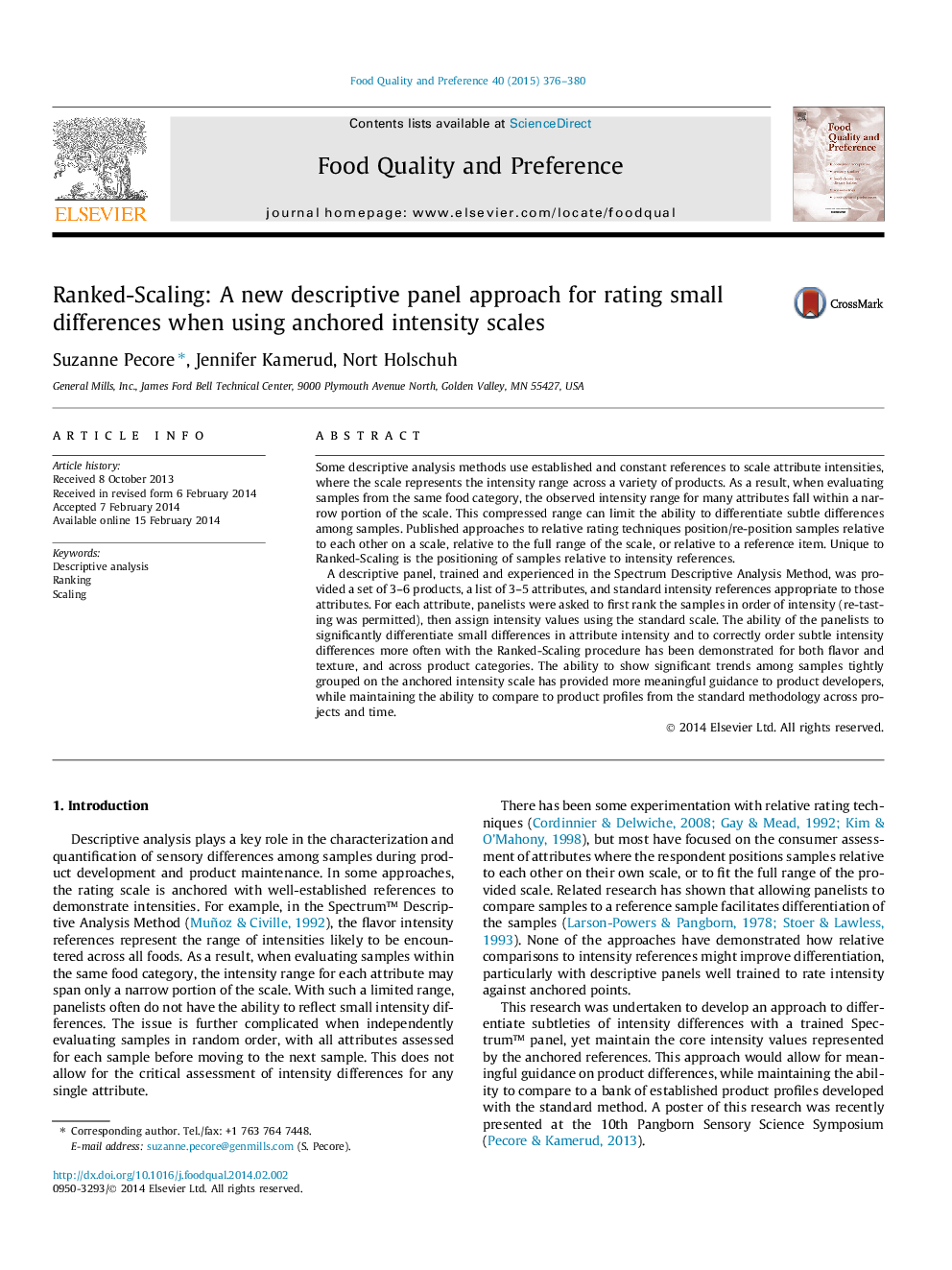| Article ID | Journal | Published Year | Pages | File Type |
|---|---|---|---|---|
| 4317050 | Food Quality and Preference | 2015 | 5 Pages |
•Ranked-Scaling is a modification to descriptive analysis to separate small intensity differences.•For each attribute, samples are first ranked by intensity and then assigned an intensity value.•Ranked-Scaling is shown to separate subtle intensity differences more often than traditional scaling.•This approach is useful when samples are tightly grouped on an anchored intensity scale.
Some descriptive analysis methods use established and constant references to scale attribute intensities, where the scale represents the intensity range across a variety of products. As a result, when evaluating samples from the same food category, the observed intensity range for many attributes fall within a narrow portion of the scale. This compressed range can limit the ability to differentiate subtle differences among samples. Published approaches to relative rating techniques position/re-position samples relative to each other on a scale, relative to the full range of the scale, or relative to a reference item. Unique to Ranked-Scaling is the positioning of samples relative to intensity references.A descriptive panel, trained and experienced in the Spectrum Descriptive Analysis Method, was provided a set of 3–6 products, a list of 3–5 attributes, and standard intensity references appropriate to those attributes. For each attribute, panelists were asked to first rank the samples in order of intensity (re-tasting was permitted), then assign intensity values using the standard scale. The ability of the panelists to significantly differentiate small differences in attribute intensity and to correctly order subtle intensity differences more often with the Ranked-Scaling procedure has been demonstrated for both flavor and texture, and across product categories. The ability to show significant trends among samples tightly grouped on the anchored intensity scale has provided more meaningful guidance to product developers, while maintaining the ability to compare to product profiles from the standard methodology across projects and time.
